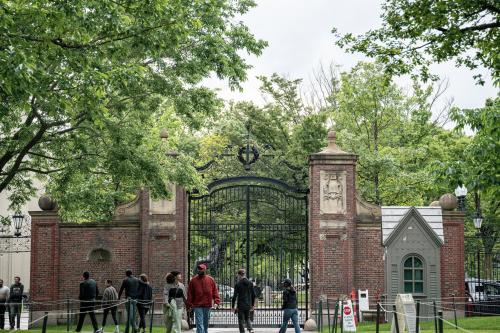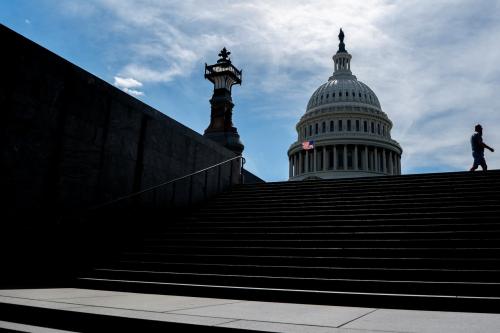“So if you haven’t found a job yet: You’re better off coming to the city than sitting on your parents’ couch.” Mayor Michael Bloomberg, Remarks at the Cornell University 2012 Convocation, May 27, 2012
As another college graduation season draws to a close, today’s New York Times reports the results of a small analysis we conducted on college degree attainment rates in metropolitan areas. We examined the share of adults age 25 and over in the 100 largest U.S. metro areas who held at least a bachelor’s degree in 2010, versus in 1970. (The Times’ website provides a table with the key data.)
It suggests a centrifugal force that is concentrating the nation’s college graduates into a set of metro areas that, like Bloomberg’s New York, are pulling farther away from the pack.
But first: Why is high college degree attainment important for a metropolitan area? The article notes that places in which lots of college graduates cluster exhibit patterns that, not surprisingly, are common to college graduates themselves: longer life expectancies, higher incomes, fewer single-parent families. Indeed, differences in adults’ rate of bachelor’s degree attainment explain nearly three-quarters of the variation in per capita income among metro areas in 2010. And higher regional income can translate into a higher tax base, better public services, and more private amenities.
The Times story emphasized one of the key findings of the analysis: as the overall American population grew more educated over that 40-year period, metro areas became less alike in their rates of college degree attainment. It reports the story from Dayton, OH, a metro area that ranked in the middle of the pack in 1970 (49th out of 100), when it had a large supply of good jobs, at firms like NCR and GM, that didn’t require a college degree. Today, however, in the wake of significant manufacturing job losses, it ranks 85th among the 100 largest metro areas, with just 24 percent of its adults holding a college degree, well below the metro average of 32 percent.
By contrast, the Chicago metro area—also a significant manufacturing center in 1970—had a very similar share of college graduates to Dayton that year. Yet it managed a large jump in educational attainment over the succeeding four decades, as its economy diversified and moved into high-value services, ranking the region 18th overall by 2010 (34 percent of its adults hold a four-year degree).
These two places exemplified the broader divergence that occurred over time among metro areas in their college degree attainment rates. Some trends worth noting:
- In the 20 most highly educated metro areas in 1970, 16 percent of adults held a college degree. In those same metro areas in 2010, 38 percent of adults held a college degree, a 22 percentage-point increase. The 20 least educated metro areas in 1970 made substantial progress too—growing their college degree share from 9 percent to 25 percent—but that 16 percentage-point increase still left them farther behind the “smartest” metro areas by 2010.
- Seven of the ten most educated metro areas in 1970 remained among the ten most educated in 2010. Washington, D.C. held the number one spot in both years. Only four of the ten least educated metro areas in 1970 remained in that group in 2010, with Central Valley immigrant magnets such as Stockton, Modesto, and Bakersfield moving down the list during that time.
- Metro areas that enjoyed the most substantial jumps in their college degree attainment ranks included many, like Dayton, that lost a tremendous share of their manufacturing between 1970 and 2010. But because regions like Worcester, Baltimore, Charlotte, and Pittsburgh shed much of that base earlier than other manufacturing centers, they have had more time to build services-oriented economies in sectors like health, professional services, higher education, and finance, and to grow, attract, and retain highly educated populations to fill those jobs.
- When it comes to absolute increases in the share of adults with college degrees, size clearly matters. Among the 20 metro areas with the largest such increases from 1970 to 2010 were Boston, San Francisco, Washington, New York, Chicago, Seattle, Atlanta, and Denver. Indeed, the metro areas posting the largest gains are, on average, more than three times as large as the metro areas experiencing the smallest gains over that period.
So what’s going on? A mixture of powerful economic phenomena are boosting the value of living around other college graduates. Young educated workers will change jobs numerous times over their careers, which makes living in a large, “thick” labor market with diverse opportunities more appealing. The same force leads an increasing number of educated two-earner couples to these same sorts of large metro areas. Living in a highly educated metro area boosts one’s own acquisition of human capital and earning power, and leads to better employment outcomes for workers across the education spectrum.
This doesn’t mean, however, that it’s the end of the line for Dayton and other metro areas that are lagging in the race for highly educated workers. If nothing else, the experience of places like Pittsburgh indicates that progress is possible, even for metro areas that are not exactly migration magnets for young adults. But those places also provide a reminder that an upgrade in educational attainment doesn’t occur spontaneously, and often accompanies broader economic transition in the region.
Young people will still leave Dayton, as they do every major U.S. metro area, for opportunities in places like Charlotte and New York. Yet with respected higher educational institutions, a still-significant advanced manufacturing base, innovation hubs like Wright-Patterson Air Force Base, and a new sense of urgency, Dayton may have the fundamentals to compete more vigorously for a highly educated workforce in the coming decades, and the prosperity that it can bring.
The Brookings Institution is committed to quality, independence, and impact.
We are supported by a diverse array of funders. In line with our values and policies, each Brookings publication represents the sole views of its author(s).




Commentary
Where the Grads Are: Degree Attainment in Metro Areas
May 31, 2012